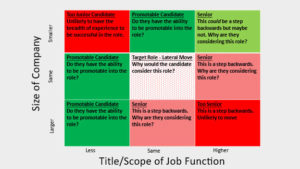Artificial Intelligence in recruitment
Recruiting teams should consider the advantages of AI tools that support the sourcing, screening and hiring of candidates in order to create a more efficient talent acquisition process – especially for highly standardized job profiles.
Screening resumes and CV’s and identifying talents from a large candidate pool is one of the main challenges of recruiters and HR professionals. Therefore, the advantages and disadvantages of using AI tools in recruitment need to discussed. When do humans still beat technology and when is it the other way round?
What is Artificial Intelligence for recruiting?
Artificial Intelligence in recruitment is the use of machine learning, which learns and understands to screen and shortlist the right candidates from a large pool of candidates. Meaning that manual, repetitive and high-volume tasks can be automated in order to save time and increase the quality of hire.
Benefits of Artificial Intelligence tools
- Saving time
One of the main advantages of using AI is the significant reduction of time spent on manually screening resumes. Every recruiter or HR professional can confirm that the hiring volume has increased significantly over the last years. Therefore, it is important that recruiters get more efficient by „doing more with less“. Screening a high number of resumes in large candidate pools is time-consuming and leads to the result that many applicants are not relevant or unqualified for the position. AI for recruiting therefore offers an opportunity to increase efficiency by automating the screening of resumes or even the scheduling of interviews with applicants. Furthermore, this time reduction enables to improve the time-to-hire, meaning that recruiters are less likely to lose interesting applicants to faster and more efficient competitors. Important here is, that the AI tools is integrated in the current Applicant Tracking System in order to ensure a smooth process and workflow.
- Improvement of the quality of hire
The quality of hire is very important in order to match the candidates expectations and skills with the job requirements. The use of AI tools improves the quality of hire, as the collection of data ensures the standardization of matching between candidates’ experience, knowledge, skills and the requirements of the job. Provided that profiles must be clearly selected according to competencies and not according to potentials. This in the long end, leads to happier and more productive employees and lower turnover rates.
Challenges of AI
- Requirement of data
AI tools that use machine learning in order to screen resumes need a lot of data in order to learn how to screen the resumes as accurately like a human would. In general, it can be said, that AI tools need in the beginning a lot of data to ensure high quality results that mimic human intelligence.
- Human biases
When screening resumes humans can fall into the trap of human biases (age, gender, race, etc.). One would think that AI tools are immune to these human faults and reduce unconscious biases. But AI tools are designed and trained to mimic human behaviours and to find patterns in our human behaviours. Meaning, that AI tools can learn and use these biases when they are developed without due diligence. Therefore, AI tools need to be designed and continually monitored for any biases.
- Scepticism
Recruiters are often faced with new technologies and tools that promise to improve their work processes. Therefore, HR professionals may be sceptical in the beginning as they think that no tool or software can automate their tasks and do their job as good as they do. Meaning, the acceptance of AI tools in recruitment teams can be challenging in the beginning.
Examples of Artificial Intelligence Recruiting Tools
- Screening software
Intelligent screening software enables the automation of resume screening and ranks, grades and shortlists candidates based on their skills, experiences, etc. This intelligent software can also enrich existing candidate information by consulting public information and social media profiles.
- Recruiter chatbots
Recruiter chatbots can be used in order to provide 24/7 real-time interactions with candidates. These chatbots can improve the candidate experience by giving frequent updates throughout the application process, next-step suggestions and even by giving the candidate feedback. - Digitized interviews
AI tools nowadays can analyse the speech patterns, word choices and facial expressions of candidates and determine the fit of the candidate for the position and even the fit concerning corporate culture.
In conclusion, Artificial Intelligence tools can increase the efficiency and effectiveness in recruiting. AI can automate many time-consuming tasks, nevertheless, used alone it is no panacea. AI Tools may ignore human idiosyncrasies of cultural fit or may overlook candidates that are qualified but that have underachieving CV’s. Also in case of Management positions where personnel and professional competences are combined, AI quickly has its limits.
Nevertheless, it is important to develop a talent acquisition strategy that combines these new AI technologies with the skills and expertise of human professionals.
Article written by Bianca Altendorfer, MSc, CFR Global Executive Search Austria
Photo source: Pexels






